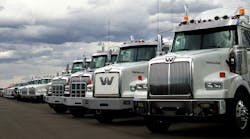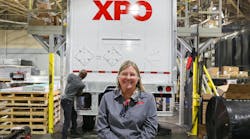Got the chance to talk with Dan Cutler recently, the “tell it like it is” director of product development for General Motors Isuzu Commercial Truck. While he's partial to his product line, he's always blunt in his assessment of market trends and issues. Here's some of what he had to say about the medium-duty market.
“It boils down to this: if the customer asks for it — hybrid powertrains, anti-rollover systems, etc. — they will get it,” he told me. The flip side of that is also true: “If customers aren't willing to pay for it, then we won't build it in.”
Before any discussion about enhancing today's trucks with new technology can take place, however, two key criteria must be firmly established: durability and dependability. “We must have [those] before we start talking about anything else,” Cutler said.
“After that, it comes down to payback. Will a hybrid powertrain pay for itself? Will you get enough fuel savings to offset that extra cost? It makes sense if you can pick up fuel savings by not having to idle your truck at a delivery or job site, yet still have available power,” he pointed out. “There needs to be a demand for technology like this before we can move forward…Right now, no one's beating down any doors to get this technology.”
I think it's a brutal but very true assessment of the medium-duty market today. Truck owners and operators view their trucks as tools, and if additional technology doesn't make their tools work better or cheaper, they don't want them on their vehicle. It's got to work well and demonstrate a payoff before a commercial buyer is going to plunk down hard-earned cash.
Take anti-rollover systems, for example. Would a landscaping fleet really want to invest in this kind of technology if their trucks are parked at customer sites 50% of the time, with 30% of their time spent poking along residential streets at low speed?
That's not to say customers don't care about improving vehicle safety or reducing emissions — far from it. George Survant, fleet manager for Florida Power & Light, has a richly deserved reputation for testing out new technologies — everything from hybrid bucket trucks to Goodyear's DuraSeal self-sealing tires. “FP&L is always willing to test out anything new we're working on” Larry Tucker, Goodyear's commercial tire product manager, told me recently.
However, FP&L has the kind of fiscal resources and fleet maintenance muscle few smaller commercial operators can tap into. FP&L can quickly determine if there's a payback for using new technology, which is a mighty rare and precious position to be in for a medium-duty fleet. Smaller operators today are just trying to cope with the higher sticker prices resulting for mandated '07 emission rules; they can't look down the road these days because dealing with the here and now is taking up all of their time.
Still, that doesn't mean technological advances are getting shunted off to the side. Isuzu's Cutler told me that a major area of fleet interest is telematics, even among “mom and pop” operators.
“Any time you can extract operational data about your vehicle, that gives you an opportunity to reduce costs,” Cutler explained. “We can offer reports to customers that look at vehicle speed, hard braking, average fuel economy, monitor equipment condition, service intervals, and funnel alerts to headquarters if the vehicle gets into an accident. All of that offers direct payback to customers. From a cost standpoint, if you can use that kind of data to save money, it makes a lot of sense.”
In the end, it's up to fleet managers like yourselves to determine when and where new technology makes sense.


